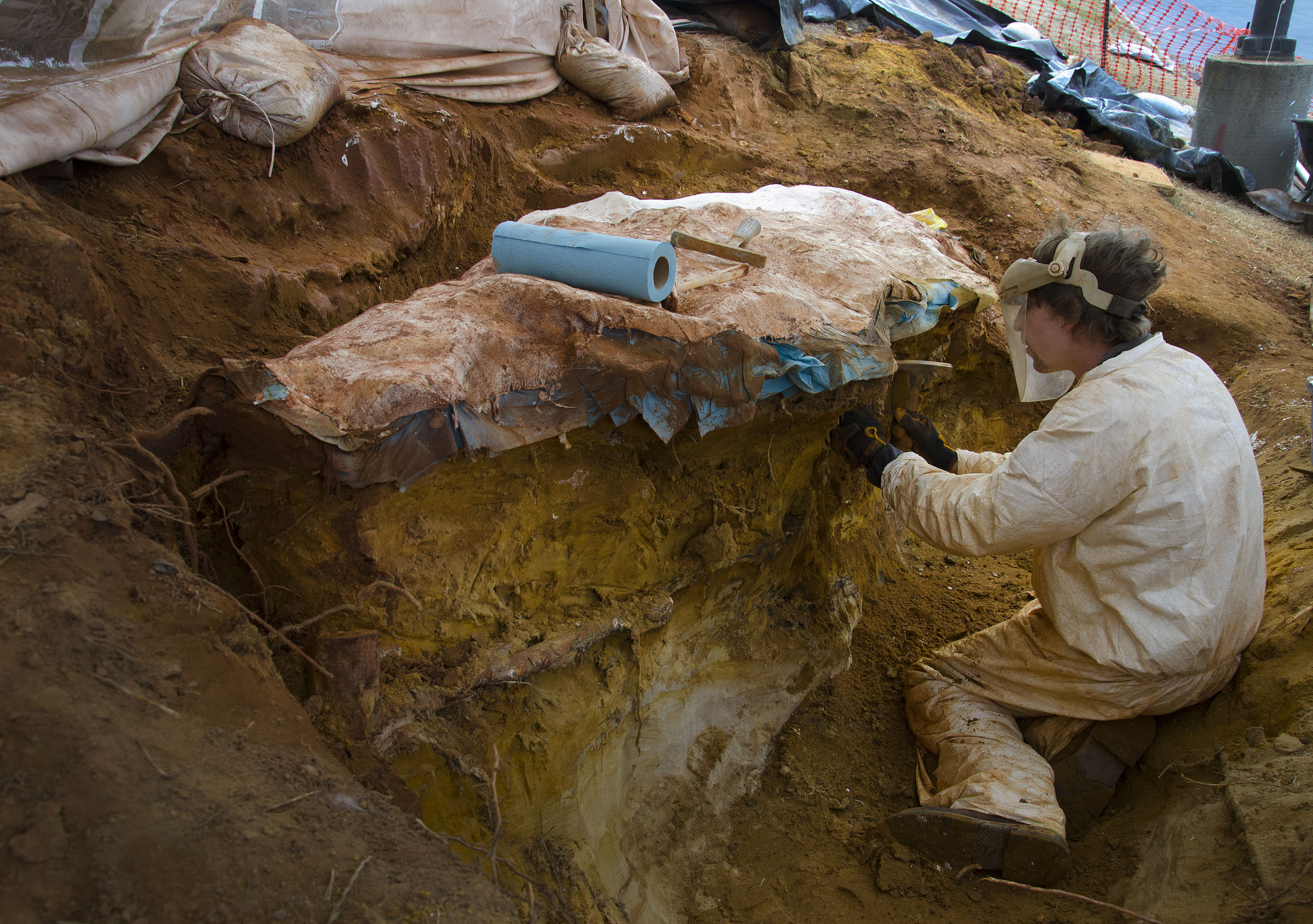
NASA finds largest dinosaur tracks at its own backward that can change our knowledge of prehistoric era
NASA has always been known to be an expert in space exploration, but recently the agency has expanded its domain with the latest discovery of the feeding ground of dinosaurs near D.C. This wonder happened by a significant coincidence. It was during the 2012 summer when Ray Stanford, a fossil expert discovered an unusual feature on the stone near NASA’s Goddard Space Flight Center near Maryland in the USA. He was there to drop Shiela, his wife who works at the space agency. He noticed that the hillside behind the building has an odd look on the rock that was exposed.
Stanford went ahead at inspected the site closely where he found a footprint that was about 12-inch in width. This footprint belonged to a dinosaur named Nodosaur that fed on plants and reigned the earth during the latter phase of Jurassic period to the last phase of the Cretaceous era. Following this amazing discovery so close to home, Stanford immediately alerted the NASA staff members and the excavation of the rock slab provided about 70 tracks from a variety of dinosaurs and mammals. The findings of the research done on the rock which was published in the journal named “Nature” stated that the rock was about 8 feet by 3 feet in area. The tracks on this rock were placed between the years 145 to 66 million years before today.
The co-author of the study, Martin Lockley, a paleontologist at Denver based “University of Colorado” explained that the rock is filled with mammals that ruled the earth during the Cretaceous period. The tracks found here are much greater in number than any other site ever found in the world. Even when the rock isn’t a big one, one can easily locate more than 70 footprints of different animals.
“The concentration of mammal tracks on this site is orders of magnitude higher than any other site in the world,” said Martin Lockley, paleontologist with the University of Colorado, Denver, a co-author on the new paper. Lockley began studying footprints in the 1980s, and was one of the first to do so. “I don’t think I’ve ever seen a slab this size, which is a couple of square meters, where you have over 70 footprints of so many different types. This is the mother lode of Cretaceous mammal tracks.”
The footprints come from at least 26 different mammals with the largest mammalian track as well. The rock also had a baby track of the nodosaur while others include that of Sauropod, theropods as well as Tyrannosaurus Rex along with Pterosaurus, a dinosaur of the flying kind. The presence of such a large number of footprints indicates that it used to be a feeding frenzy for the mammals where now exists the space agency.
“We do not see overlapping tracks — overlapping tracks would occur if multiple tracks were made over a longer period while the sand was wet,” said Compton Tucker, a Goddard Earth scientist who helped with the excavation, coordinated bringing in multiple scientists to study the tracks, and has worked to create a display of the cast in Goddard’s Earth science building. “People ask me, ‘Why were all these tracks in Maryland?’ I reply that Maryland has always been a desirable place to live.”
The vegetarian mammals might be chomping on the trees while the smaller ones nibbled on insects and worms. The larger hunters consumed both the vegetarians and the smaller carnivores which is why you can see a mix of all the types.


